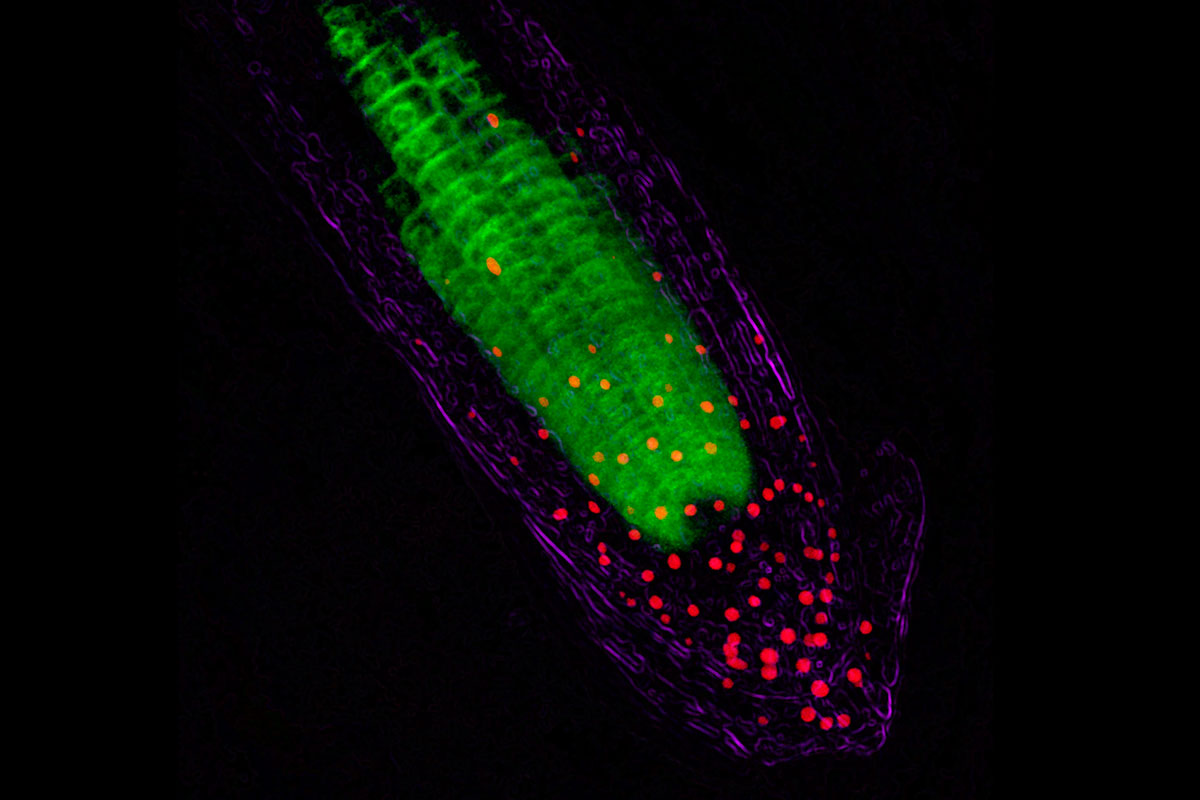
Dr John Runions/Science Photo Library
By Alice Klein
A light-bulb moment? Plants seem to pipe sunlight directly down into underground roots to help them grow.
Light receptors in stems, leaves and flowers have long been known to regulate plant growth. Roots also have these receptors, but it has been unclear how they sense light deep in dark soil.
Hyo-Jun Lee at Seoul National University in South Korea and his colleagues used Arabidopsis thaliana – a small flowering plant from the mustard family – as a model to study this phenomenon.
They found that the plant stem acts like a fibre-optic cable, conducting light down to receptors in the roots known as phytochromes. These trigger the production of a protein called HY5, which promotes healthy root growth.
When the plants were engineered to have phytochrome mutations, HY5 production declined. And when they had HY5 mutations, their roots became stunted and strangely angled.
Light versus chemicals
To check whether light was directly transmitted through the plant rather than it activating signalling chemicals that travelled to the roots, the researchers attached a light source to the stem of plants via an optical fibre. An underground detector at the end of the roots confirmed that light was transmitted through.
Moreover, when they treated A. thaliana specimens in the dark with common plant signalling chemicals such as sucrose, no significant increase in root growth was observed – suggesting that such chemicals were not driving growth.
Red light was found to move most efficiently through the plants. The long wavelengths of such light may be favourable because they can travel further than shorter blue and green wavelengths, says Lee.
However, the light’s intensity would be too low for creatures in the soil to see it illuminating the roots, or for bacteria to use it for photosynthesis, he says.
Common function?
Most plants have phytochromes, suggesting that directly piping sunlight down the stem is a common mechanism used to optimise root growth, says Lee.
This makes sense, because light signalling would be faster than chemical signalling, says Mike Haydon at the University of Melbourne, Australia.
The study does not, however, provide definitive proof, he says. The researchers found that it took 2 hours from initial illumination for plants to activate their root phytochromes – longer than might be expected if the light is directly conducted.
In addition, the study only investigated a handful of signalling chemicals that could act as mobile intermediaries between light, the stem and the roots, says Haydon. “This doesn’t really exclude the possibility of a mobile intermediate signal.”
Journal reference: Science Signaling, DOI: 10.1126/scisignal.aaf6530
Read more: Plants may form memories using mad cow disease proteins
No comments:
Post a Comment